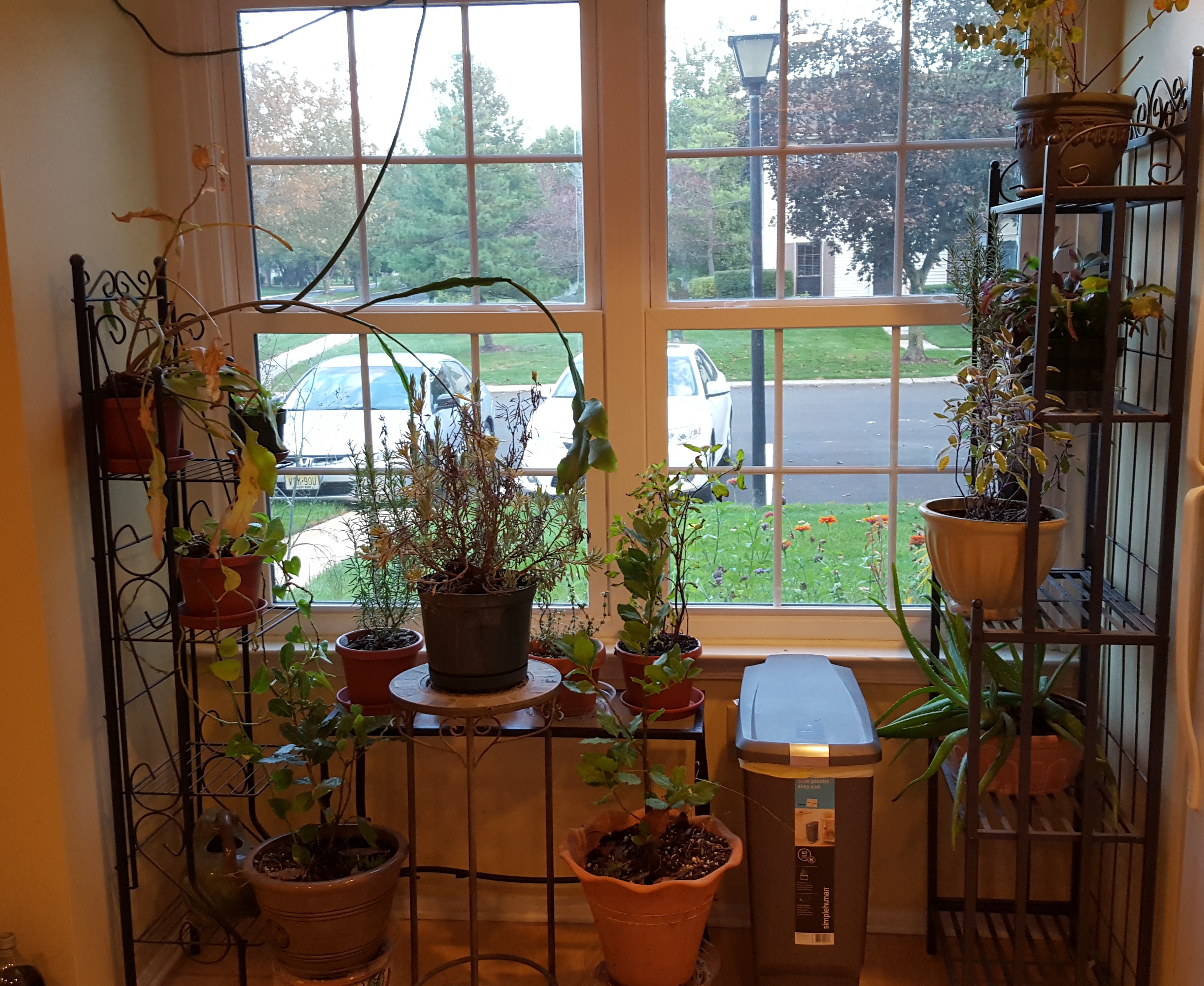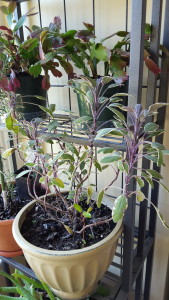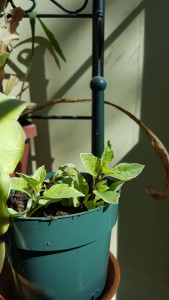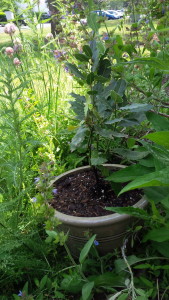When nighttime temperatures dip into the 40sF (50sF for basil), it’s time to bring your tender herbs indoors for the winter. Which herbs spend the winter indoors depends on your growing zone. For me in zone 6, I overwinter any herbs that are only hardy through zone 7 plus my rosemary. Rosemary is iffy in zone 6. If we have a mild winter and it is planted in a protected area, it will most likely survive. Just to be safe, I advise everyone to bring it indoors. If you live in zone 5, you will bring in herbs that are hardy through zone 6 plus any herbs that are iffy in your zone. And so on.
Herbs that are grown in containers are the easiest to bring indoors. However it is possible to dig up your tender herbs and repot them into containers to bring them indoors. Just remember that they will be going through transplant shock and the shock of a completely different climate inside of your house. They may die back almost completely at first before they settle in and start pushing out new growth.
Another, less traumatic way to bring in plants that are not containerized is to take cuttings to grow indoors during the winter while letting the outdoor plants die. Snip off pieces 3” to 4” from a growing tip, strip off the bottom leaves then dip the cut in rooting hormone and plant in a soilless mix. Keep your seedlings moist. When the cuttings start to develop new leaves, you know that they have rooted. Transplant them into containers with regular potting soil. You can harden them off outdoors with your seedlings in the spring.
Transition Indoors
Just as you harden off your seedlings in the spring before planting them in your garden, plants need some transition time between outdoors and indoors. There are a couple of ways to do this. You can bring your plants indoors at night only and then gradually lengthen the amount of time they spend indoors during daylight hours until they are spending the entire day inside. Or if you have an unheated enclosed porch or entryway, you can put your containers there for a few weeks before bringing them into your home. If a frost is predicted, bring them inside immediately.
Light
Once indoors, it’s a good idea to mimic as much possible the environment in your garden during the growing season. Light is key. Herbs, like vegetables, like full sun. A south facing window that receives 6 to 8 hours of sunlight is ideal. If you don’t have a window that gets sunlight all day, you should provide supplemental lighting. There’s no need to buy expensive Gro-Lights. Plain, old fluorescent lights will do. Two 40 watt cool fluorescent bulbs are best. You need 2 hours of lights to equal 1 hour of sunlight, so if your window only gets 4 hours of sun a day, you will need the lights for an additional 4 to 8 hours per day. That’s the recommended 6 to 8 hours of sunlight minus the 4 hours of actual sunlight times 2.
Temperature
Herbs prefer cooler temperatures in the winter. A daytime temperature of 65⁰F to 70⁰F is best although they can tolerate daytime temperatures to the mid-70sF. At night, they want to be at least 10⁰ cooler. So turn down your thermostat at night. Studies have demonstrated that humans get more hours of restful sleep at lower temperatures so lower your thermostat at night to help you sleep and keep your herbs happy.
Moisture
Hopefully you have been growing your herbs all summer in containers with drainage holes and well-drained soil. When you bring them indoors, you should be watering them only when the soil is dry. Add water until it begins to come out of the drainage hole, then stop until the soil dries out again. Do not over-water. The air in our homes is very dry. Adding a little humidity to your herbs will help them survive the winter indoors. You can either mist them daily or place their containers on humidity trays which are trays of gravel filled with water. Water the gravel regularly. The evaporating water will provides much needed humidity.
Fertilizer
Most herbs enter a period of dormancy during the winter months, growing very little. There is no need to fertilize them during this dormant period which normally lasts through mid-January when the days start getting longer. Adding fertilizer may, in fact, harm them by forcing them into active growth when they should be resting. Hold off fertilizing them until mid-January when it is time for them to “wake up” and start growing again. Begin a regimen of biweekly fertilizing with a liquid fish emulsion or seaweed.
The exception to this rule are any cuttings you may be rooting. You want them to actively grow. Because they are growing in a soil-less mix, there are no nutrients in that mix so you will need to add some. Once your cuttings have developed roots, you can start using a 20-20-20 or 20-20-10 fertilizer every two weeks according to the directions.
Transition Outdoors
After spending the winter in your house, your herbs will need to become acclimated to the outdoors in the spring. Once all danger of frost has passed, you can begin putting them outdoors in light shade for a few hours a day. Each day you should increase the amount of sunlight they receive and the number of hours they spend outdoors until they are spending the entire day outside in the sun.




